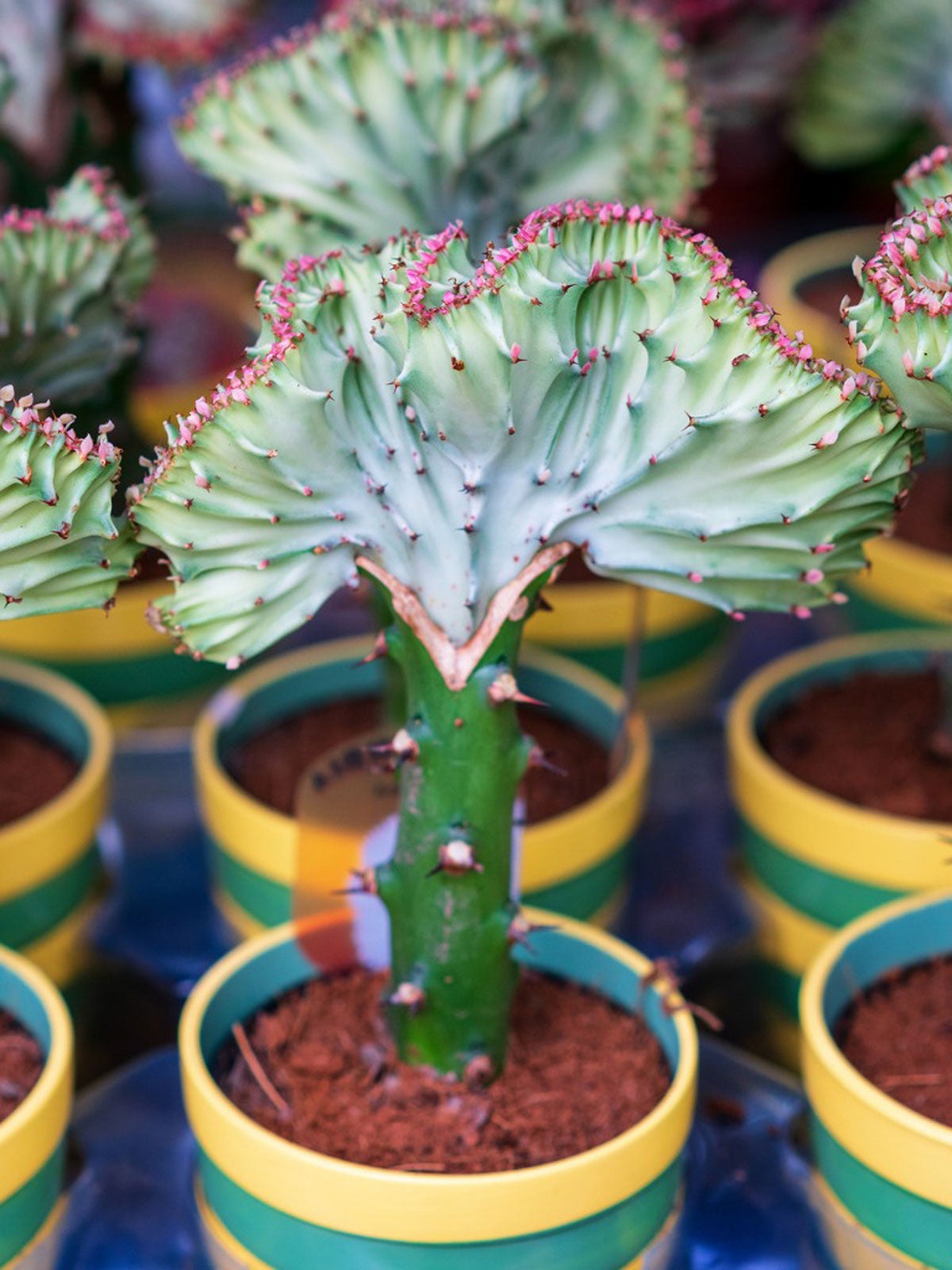Mermaid Succulent Care: Growing Mermaid Tail Succulents


Mermaid succulent plants, or Crested Senecio vitalis and Euphorbia lactea ‘Cristata,’get their common name from their appearance. This unique plant has the appearance of a mermaid’s tail. Read on to learn more about this interesting succulent plant.
Succulent Mermaid Tail Plant Info
You may not be familiar with plants that are crested in general or what it means. Crested succulent plants are unusual, making them more valuable. A plant becomes crested through a process called fasciation, commonly seen in flowers. With succulents, this is an “abnormal flattening of stems.”
When looking closely at a crested plant, you’ll see that the stem is flattened along the growing points. This is what makes the sprouting foliage short and swollen on the plant. Stems appear fused together at the bottom and spread out at the top, creating the look seen on the crested plant. The mermaid tail succulent gets the crest from the distorted shoots created by this process.
If you must have one, as many of us decide when we first see it, purchase one that is already growing. While the mermaid cactus succulent can grow from seed, there is no guarantee it will be crested, which is the feature that provides the unique appearance. Even though the plants are often crested, there is no surety unless you already see that feature upon purchase.
Without the crest mutation, you’ll have either a regular blue chalk sticks (Senecio vitalis) or dragon bones plant (Euphorbia lactea). Check the botanical name on the tag when you purchase to verify which plant you have. Fortunately, both plants require the same care, so they should grow vigorously in the same conditions.
Mermaid Succulent Care
The blue-green foliage is the attraction of this interesting, crested plant, with the Senecio type spikier and the Euphorbia snaky and edged in coral (lending to its common name coral cactus too). The exotic succulent adds a touch of the tropics to your home or anywhere it is located. This low-maintenance succulent is appropriate for indoor or outdoor growing, except where temperatures get too cold.
When growing mermaid tail succulents, regardless of which specific variety you have, start with gritty, well-draining soil in a container with a drainage hole. This provides the right planting medium for the mermaid tail. Care of this plant includes acclimating it to a sunny spot outside or whatever type of bright or part sun area you choose inside.
Sign up for the Gardening Know How newsletter today and receive a free copy of our e-book "How to Grow Delicious Tomatoes".
Limited watering is required for this succulent. Let the soil dry well before watering again. As with many succulent plants, too much water can cause root rot, especially if water lingers around the roots. The proper soil encourages the water to flow through. Don’t let the pot sit in a saucer of water either. How often to water depends on the conditions.

Becca Badgett was a regular contributor to Gardening Know How for ten years. Co-author of the book How to Grow an EMERGENCY Garden, Becca specializes in succulent and cactus gardening.